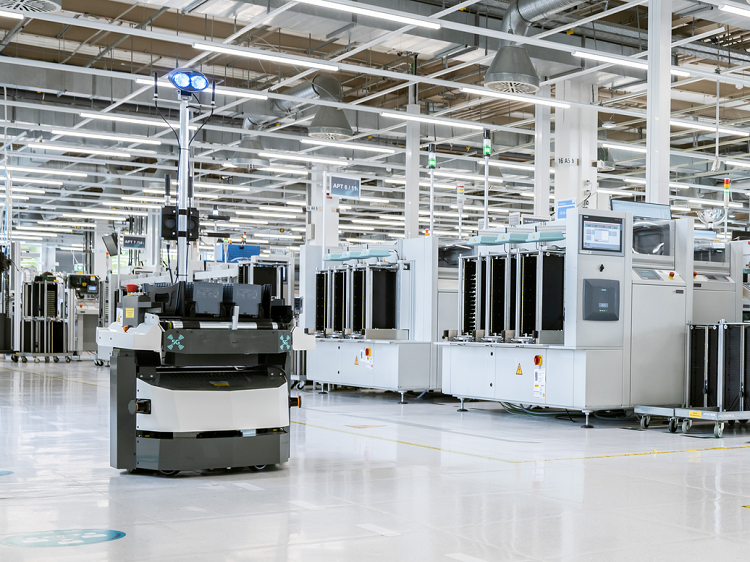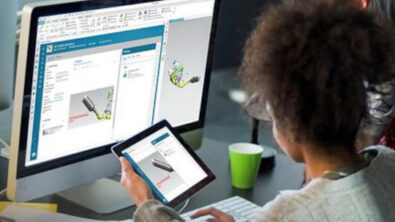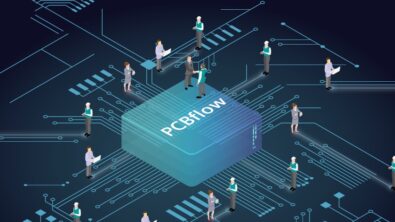A tale of two companies: Part II – A look at SaaS vs on-premises solutions

In our previous blog “A tale of two companies: Part I – How SaaS impacts innovation, efficiency and costs,” we looked at Modern Robotics (MR), a fictional company, and how they sought about achieving a goal to have a working prototype of a robot designed for retail settings. With a tight deadline of six months, various stakeholders considered what technology to use as they moved forward and how software-as-a-service (SaaS) solutions could benefit their efficiency versus their current on-premises solution.
In Part I, we split the company into two: MR-SaaS and MR-on-premises, and used this as a model to see how they benefited or were hindered by the use of SaaS and on-premises solutions.
Let’s see how things are going.
Learning about SaaS
SaaS refers to software hosted by a software vendor and delivered to the user via a browser. For the company investing in a SaaS solution, there is no need to maintain an on-premises IT setup — in fact, the user really only needs internet access from a desktop, laptop, tablet or smart phone. This means those working from home or different office locations can pull up the data and information from anywhere, at any time and from any device.
CAD, CAM, and CAE tools that had once been used on desktops for decades are always updated to current versions in a SaaS environment.
Meanwhile, the vendor handles maintenance, version updates, and other support, including security, which are managed at the highest standards expanding far beyond the capabilities of on-premises solutions. Therefore, IT has less infrastructure to manage in-house, saving both money and time because they don’t have to manage upgrades or security.
Access is granted to only those who are stakeholders on a project, or just certain parts for IP protection.
Engineers no longer have to work in one-person or single team silos either. The multi-domain approach allows mechanical, electrical, software and other engineering disciplines to work cohesively on a single source of truth, at the same time. This includes external stakeholders such as suppliers and customers.
Siemens has recognized the monumental benefits of SaaS and believes in its revolutionary way to collaborate and create. That’s why we’re investing in cloud-based technology and offer SaaS as part of our portfolio. With the comprehensive digital twin at its core combining the real world and the digital world, SaaS provides greater efficiency, boosts innovation capabilities and promotes faster decision-making.
Learn how companies are transforming the everyday with Siemens Xcelerator as a Service.
Let’s get to work
MR-on-premises was able to take off faster than their MR-SaaS counterparts simply because things could start as they always have. MR-SaaS had to spend a little time on the initial implementation and training but quickly gained ground after their teams started working collaboratively.
Their design and engineering teams worked on the project simultaneously and were accessing the necessary data and information direct from their browser. Even when a software engineer had unexpected car trouble one morning, they were able to work remotely from the car repair shop without skipping a beat.

MR-on-premises soon found they needed to scale up on talent, but with the economy in good shape and unemployment low, they struggled to fill the position through their local talent pool. Meanwhile, MR-SaaS having the same issue, broadened their search and brought onboard engineers located in different states. The new engineers received access, could be part of meetings and started collaborating with their teammates in no time.
While neither could anticipate the need for additional engineers on the project, MR-on-premises struggled to meet the first deadline because they couldn’t fill the needed positions, even though engineers were putting in overtime. MR-SaaS though had the flexibility of SaaS to scale up when they needed to.
MR-SaaS had also previously identified how their teams would create data to share, which included mechanical, electrical, and conceptual CAD apps, simulation, CAM, and other tools that could be accessed via cloud. This built-in connectivity significantly reduced email and file-sharing and gave them the opportunities to discover issues early in the design process that would have become issues down the line.
Because so many siloed teams were working toward the tight deadline for the MRone robot, MR-on-premises started having issues with receiving incorrect data from other teams after waiting longer than expected to start on their domain. It was discovered that one of the engineering teams was working off a previous iteration and their own updates weren’t valid in the parameters of the latest design. Another issue came up when someone emailed an unsaved spreadsheet to the team that didn’t have the newest information, time was lost in searching for the most recent one and then remedy the problems that arose.
MR-SaaS was able to avoid many of these issues as users had access to the latest iterations by directly logging into the platform. There were no worries about sending the right data via email or file sharing program, everything was up-to-date.
When it came to sharing data with suppliers, which involved IP protection concerns, MR-SaaS could grant suppliers access when they needed it and then remove access once the job was complete. If there were aspects of the MRone robot they didn’t want external stakeholders to see, they could easily hide that information without compromising the suppliers’ ability to design components.

This wasn’t as easy for MR-on-premises. They had to send data to their suppliers and wait to see if the components would work within the context of the project. This time-consuming process meant moving forward was on-hold until the suppliers returned their specs, which then had to be tested and verified before the next domain took over.
No project runs smoothly. But for MR-SaaS, they were able to spot issues earlier and remedy them before they became an issue later on. The use of an open, accessible platform meant barriers were broken down and teams could collaborate which saved time and reduced costs. The MRone prototype shipment was launched on-schedule and on-budget.
Let’s say MR-on-premises was also able to meet the deadline. The costs, frustrations and stress put on the various teams only highlighted problems that would consist should MR not embrace digital transformation initiatives like SaaS. Luckily, MR-on-premises didn’t experience a data breach or security issue this time. Even a small IT issue though may have caused a delay in delivery or turn into skyrocketing costs. MR-on-premises, having hired additional talent and purchased resources to help this project move forward, must decide what to do with those resources such as software licenses, desktop computers and other IT infrastructure – should it take up space? Should they sell it? And will their talent remain hired or will they be let go?
The digital future with Siemens Xcelerator
The MRone project is fictitious but it’s possible to see how SaaS could boost efficiency and help minimize or even remove problems that could hinder the success of a project.

SaaS is about improving the current work environment and bridging the gap where expertise might be lacking. Technology choices that increase openness and adaptability is better for the company and paves the way for products that perform better and meet the requirements of the customer.
MR-SaaS not only launched their prototype on-time, but they boosted collaboration between internal and external stakeholders, made it so they could receive data regarding MRone’s performance within the retail location, make changes and updates quickly, and set up a culture that embraced advanced technology.
With SaaS, MR can remain competitive and efficient on their future projects.
For SaaS options, the best-in-class technology comes from Siemens Xcelerator as a Service. It’s an open digital platform with Siemens’ engineering, design, simulation, and manufacturing apps, connected using domain-specific interfaces.
The platform offers flexibility to scale up and down as needed and automatically delivers the latest software and security updates. By connecting from anywhere, anytime and from any device, all the stakeholders can work collaboratively off a single source of truth.
With Siemens Xcelerator as a Service, designers, engineers and your entire ecosystem can be free to innovate and transform the everyday.


